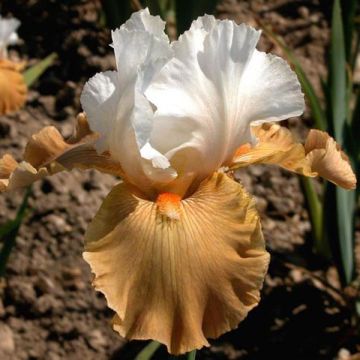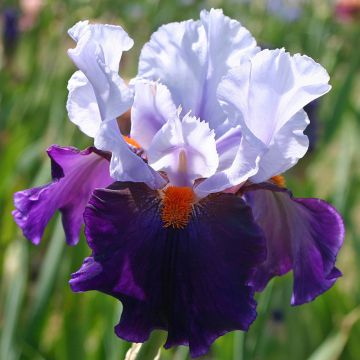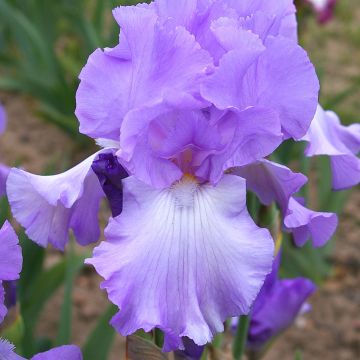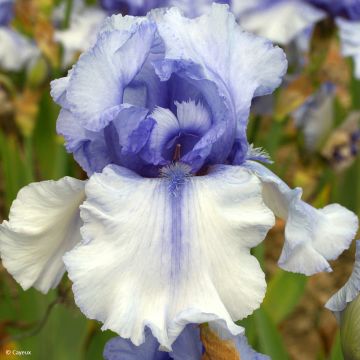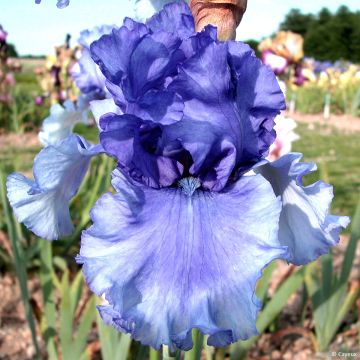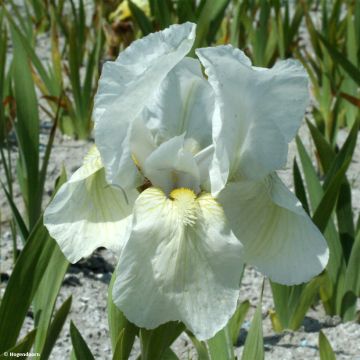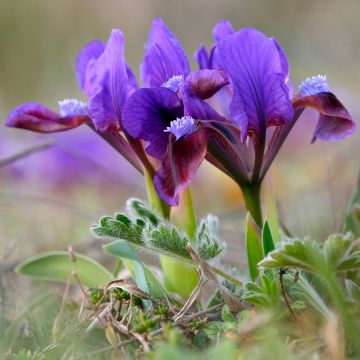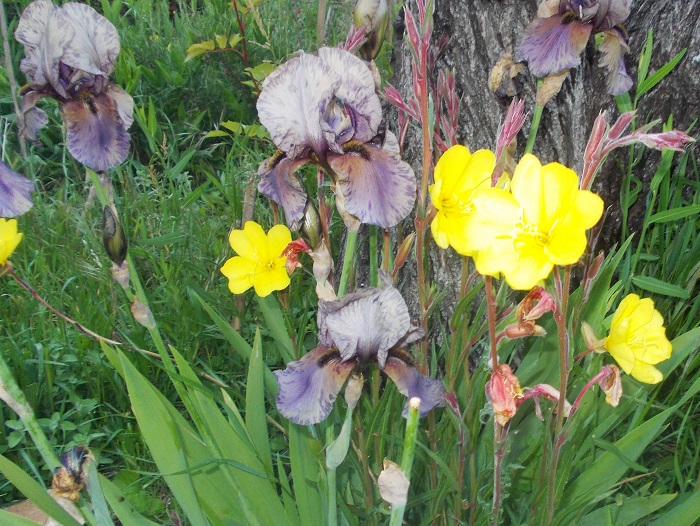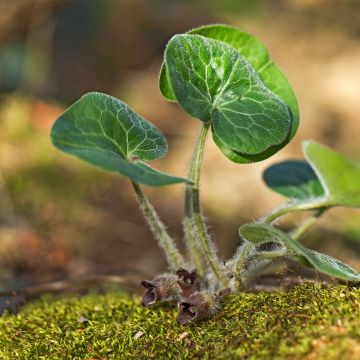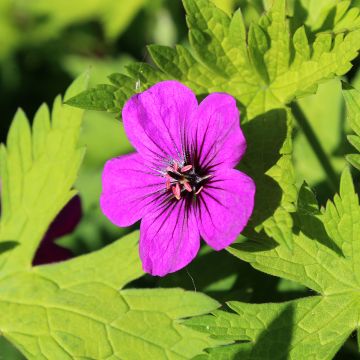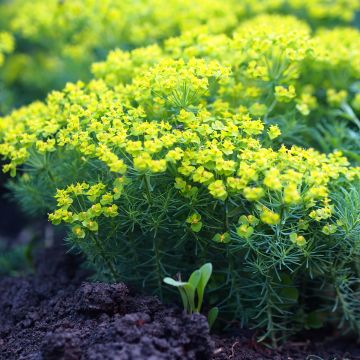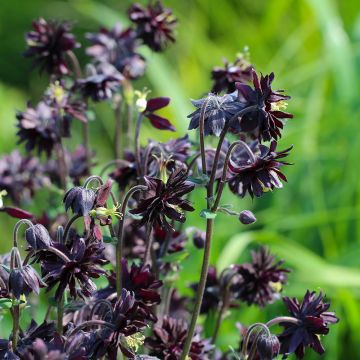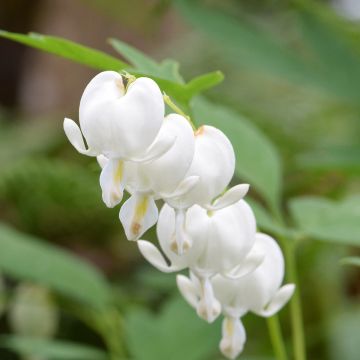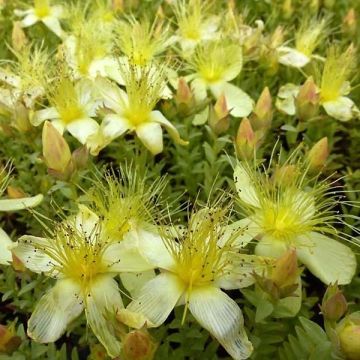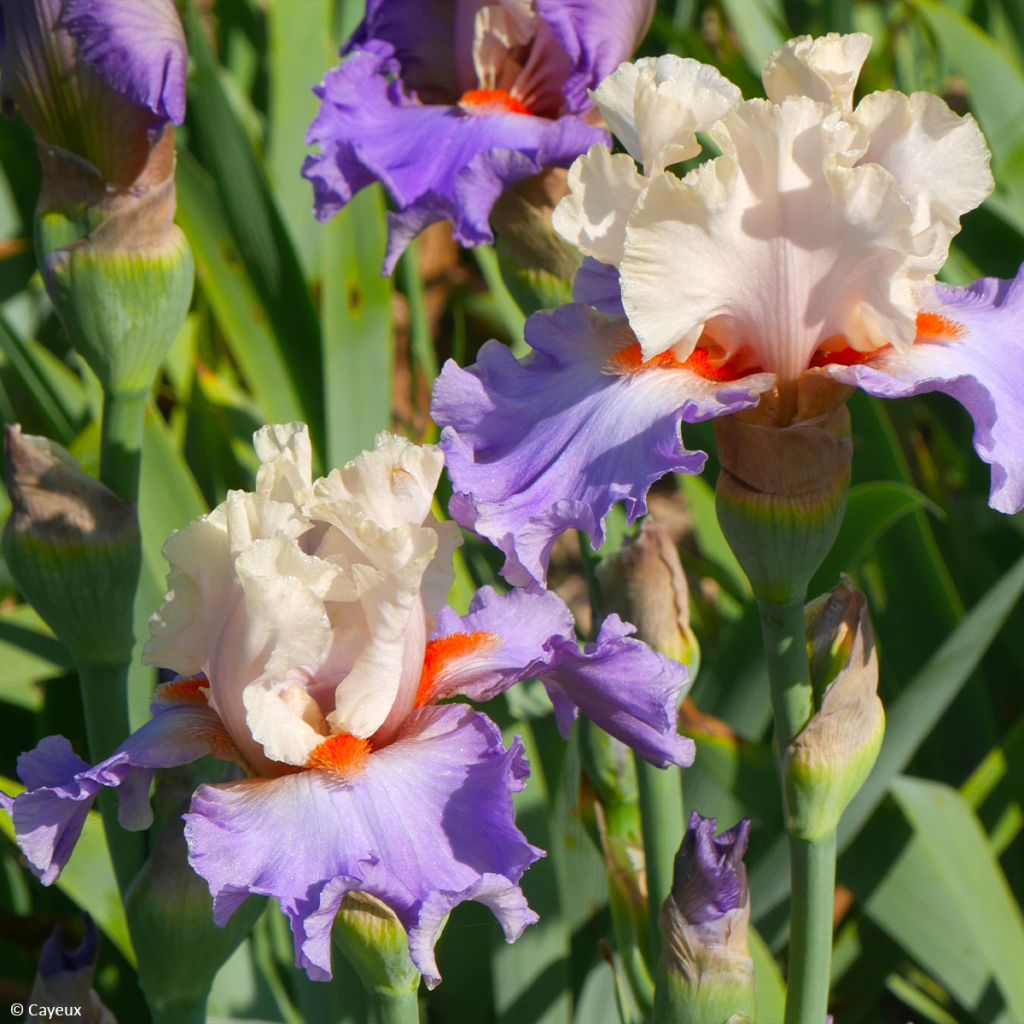

Iris germanica Dernier Cri
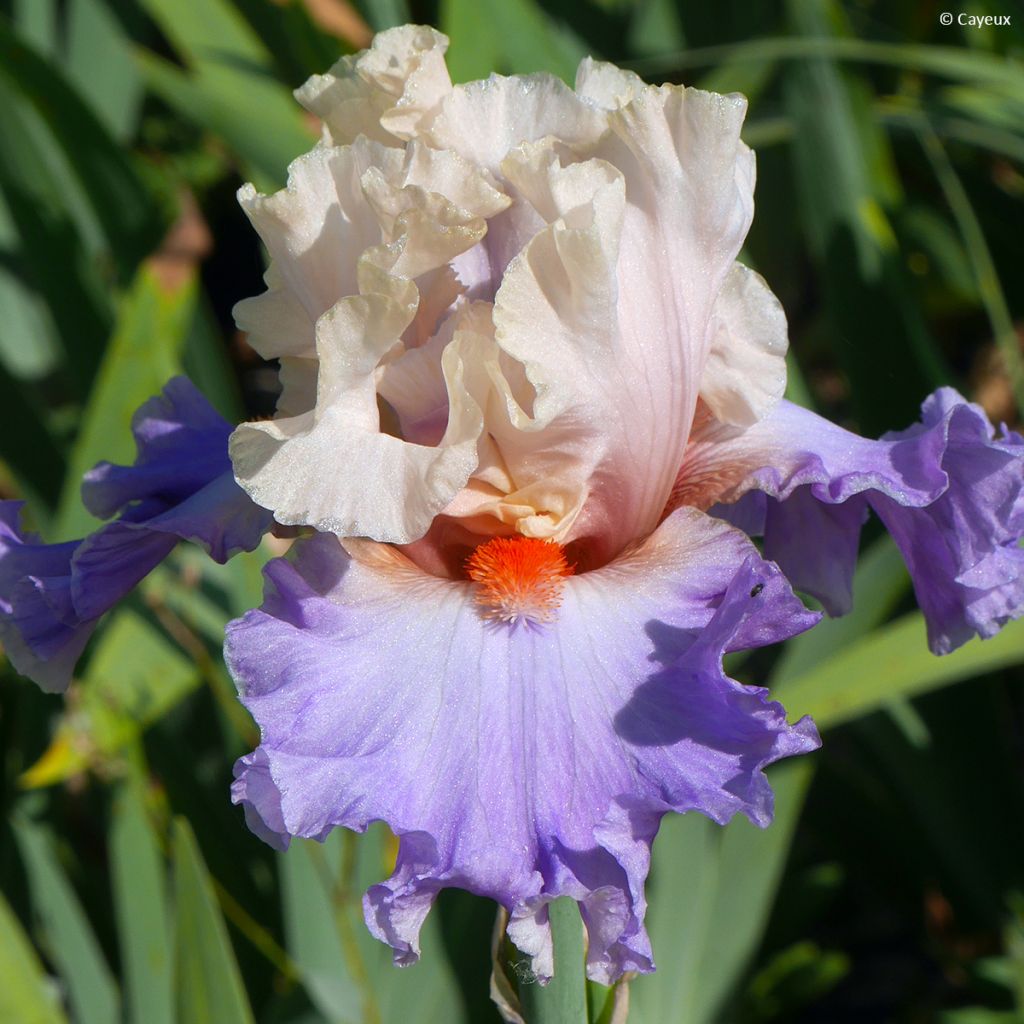

Iris germanica Dernier Cri
Iris germanica Dernier Cri
Iris germanica Dernier Cri
German Iris, Bearded Iris
Special offer!
Receive a €20 voucher for any order over €90 (excluding delivery costs, credit notes, and plastic-free options)!
1- Add your favorite plants to your cart.
2- Once you have reached €90, confirm your order (you can even choose the delivery date!).
3- As soon as your order is shipped, you will receive an email containing your voucher code, valid for 3 months (90 days).
Your voucher is unique and can only be used once, for any order with a minimum value of €20, excluding delivery costs.
Can be combined with other current offers, non-divisible and non-refundable.
Home or relay delivery (depending on size and destination)
Schedule delivery date,
and select date in basket
This plant carries a 12 months recovery warranty
More information
We guarantee the quality of our plants for a full growing cycle, and will replace at our expense any plant that fails to recover under normal climatic and planting conditions.
Does this plant fit my garden?
Set up your Plantfit profile →
Description
Iris germanica 'Dernier Cri' is a recent variety of Bearded Iris with an eminently romantic charm. Its large and stylish bicoloured flowers present a tasteful pastel harmony. The light tones of the petals, in shades of light beige, gracefully associate with the lavender tones of the sepals, with an occasional touch of orange brought by the beards. Of intermediate size, flowering late in the season, this beautiful Iris charms the beds for 3 weeks at the end of spring.
The 'Dernier Cri' Iris is a rhizomatous and deciduous perennial plant, which adopts a habit of vigorous upright clumps. It belongs to the Iridaceae family, like the Crocus, Gladiolus or Crocosmia. The species Iris germanica, or German Iris, is probably the result of hybridization between different botanical species. Belonging to the Bearded Iris group (due to the fine ridge present on the sepals), they are the most cultivated in gardens. These plants prefer neutral to limestone soils, are sun-loving, and their rhizomes need to capture the heat of the sun in summer to flower well. A minimum of 6 hours of sunlight per day is traditionally required.
'Denier Cri' is an intermediate-sized variety, reaching a height of 70 cm (28in) when in bloom. The floral stems will bear 3 to 5 or 6 flower buds in May, which will open at the end of the month and in June, depending on the region and weather conditions. The large flowers (12 cm (5in) in diameter and larger) display the customary airy grace of bearded Irises, which in some aspects are reminiscent of orchids. At maturity, the 3 sepals of a beautiful width spread almost horizontally, exhibiting their superb lavender colour. Their undulated edges give them a pleasant lightness and volume to the eye. Upright and even more ruffled, the smaller petals grow close to each other, thus concealing the style (female reproductive part). Their light colour, between beige and off-white, harmonises happily with the lavender of the sepals they overtop. At their junction, an orange lighting in which the sun likes to play is created by the presence of the beards that adorn the base of the sepals in their middle part. The clumps of slightly glaucous, sword-shaped leaves grow greener on the outside each year.
Obtained by Cayeux, 2018.
Irises are very easy to associate with other plants, perennials or bushes in flowerbeds. It is only necessary to keep in mind that the clumps will need dividing every 3 or 4 years, so they need to be given sufficient space without competition. To create decorative floral beds throughout the growing season, plant some early varieties of Iris pumila in front of 'Dernier Cri', a smaller cousin whose range comes in many colours of white, yellow, red and blue. In the foreground, you can also place Geranium cinereum Ballerina, a pretty low-growing perennial with pink flowers veined with purple from May to July. And for results all summer long, rely on salvias like Salvia nemerosa Bumbleberry, with its intense fuchsia pink flower spikes.
Flowering
Foliage
Plant habit
Botanical data
Iris
germanica
Dernier Cri
Iridaceae
German Iris, Bearded Iris
Cultivar or hybrid
Other German Iris - Bearded Iris
View all →Planting and care
Does your garden have a sunny area, sheltered from the wind, that is warm and rather dry in summer? This is the ideal location for planting irises! In the shade they will grow but do not flower. They are hardy and do not need winter protection. Well-drained soil is perfect, even if it is rather dry. Iris germanica require alkaline soil: amend yours with lime if it tends to be acidic. Excessively wet soil promotes rhizome rot. Plant from July to September: this allows the rhizomes to grow sufficiently before lifting, and to develop new roots before winter. For best results they should be planted as soon as they are purchased. Plan to divide the iris every 4 years or so to give them fresh soil. They have strong growth and need space to develop and flower well. They are planted with spacing appropriate to the size and vigour of the variety: about 34-50 cm (13-20in) for tall ones (5 to 10 plants per square metre). In a monochrome planting, the rhizomes are planted in a staggered pattern. When mixing colours, it is recommended for the overall aesthetics of the iris bed to plant them in groups of several plants of the same variety. Always consider the direction of rhizome growth by arranging them in a star shape, with buds and leaves facing outward, and spacing them well in relation to other varieties so they have room to develop.
Planting:
Dig a hole that is wide and deep enough for the roots. Make a large conical mound of soil in the hole, on which the rhizome and spread-out roots are placed. Cover the roots. It is important that the rhizome is left just above the surface of the soil. It should not be planted in a depression (risk of rot), so anticipate that the soil will settle and the iris will sink. In clayey or damp soil, the rhizome should even be left raised on a slight mound of a few centimeters. To make the soil adhere to the roots, lightly compact the soil and water it abundantly after planting. Water 2-3 times if necessary until the plant establishes.
Maintenance:
Keep the soil free of weeds by shallow hoeing, taking care not to damage the rhizomes or roots. Weeds create shade for the irises, retain moisture (causing rot), and attract slugs. Similarly, remove dry leaves. If they are diseased (reddish-brown bordered spots of heterosporiosis), burn them. Remove faded flowers to prevent the plant from wasting energy on fruit formation.
Planting period
Intended location
Care
Planting & care advice
This item has not been reviewed yet - be the first to leave a review about it.
Similar products
Haven't found what you were looking for?
Hardiness is the lowest winter temperature a plant can endure without suffering serious damage or even dying. However, hardiness is affected by location (a sheltered area, such as a patio), protection (winter cover) and soil type (hardiness is improved by well-drained soil).

Photo Sharing Terms & Conditions
In order to encourage gardeners to interact and share their experiences, Promesse de fleurs offers various media enabling content to be uploaded onto its Site - in particular via the ‘Photo sharing’ module.
The User agrees to refrain from:
- Posting any content that is illegal, prejudicial, insulting, racist, inciteful to hatred, revisionist, contrary to public decency, that infringes on privacy or on the privacy rights of third parties, in particular the publicity rights of persons and goods, intellectual property rights, or the right to privacy.
- Submitting content on behalf of a third party;
- Impersonate the identity of a third party and/or publish any personal information about a third party;
In general, the User undertakes to refrain from any unethical behaviour.
All Content (in particular text, comments, files, images, photos, videos, creative works, etc.), which may be subject to property or intellectual property rights, image or other private rights, shall remain the property of the User, subject to the limited rights granted by the terms of the licence granted by Promesse de fleurs as stated below. Users are at liberty to publish or not to publish such Content on the Site, notably via the ‘Photo Sharing’ facility, and accept that this Content shall be made public and freely accessible, notably on the Internet.
Users further acknowledge, undertake to have ,and guarantee that they hold all necessary rights and permissions to publish such material on the Site, in particular with regard to the legislation in force pertaining to any privacy, property, intellectual property, image, or contractual rights, or rights of any other nature. By publishing such Content on the Site, Users acknowledge accepting full liability as publishers of the Content within the meaning of the law, and grant Promesse de fleurs, free of charge, an inclusive, worldwide licence for the said Content for the entire duration of its publication, including all reproduction, representation, up/downloading, displaying, performing, transmission, and storage rights.
Users also grant permission for their name to be linked to the Content and accept that this link may not always be made available.
By engaging in posting material, Users consent to their Content becoming automatically accessible on the Internet, in particular on other sites and/or blogs and/or web pages of the Promesse de fleurs site, including in particular social pages and the Promesse de fleurs catalogue.
Users may secure the removal of entrusted content free of charge by issuing a simple request via our contact form.
The flowering period indicated on our website applies to countries and regions located in USDA zone 8 (France, the United Kingdom, Ireland, the Netherlands, etc.)
It will vary according to where you live:
- In zones 9 to 10 (Italy, Spain, Greece, etc.), flowering will occur about 2 to 4 weeks earlier.
- In zones 6 to 7 (Germany, Poland, Slovenia, and lower mountainous regions), flowering will be delayed by 2 to 3 weeks.
- In zone 5 (Central Europe, Scandinavia), blooming will be delayed by 3 to 5 weeks.
In temperate climates, pruning of spring-flowering shrubs (forsythia, spireas, etc.) should be done just after flowering.
Pruning of summer-flowering shrubs (Indian Lilac, Perovskia, etc.) can be done in winter or spring.
In cold regions as well as with frost-sensitive plants, avoid pruning too early when severe frosts may still occur.
The planting period indicated on our website applies to countries and regions located in USDA zone 8 (France, United Kingdom, Ireland, Netherlands).
It will vary according to where you live:
- In Mediterranean zones (Marseille, Madrid, Milan, etc.), autumn and winter are the best planting periods.
- In continental zones (Strasbourg, Munich, Vienna, etc.), delay planting by 2 to 3 weeks in spring and bring it forward by 2 to 4 weeks in autumn.
- In mountainous regions (the Alps, Pyrenees, Carpathians, etc.), it is best to plant in late spring (May-June) or late summer (August-September).
The harvesting period indicated on our website applies to countries and regions in USDA zone 8 (France, England, Ireland, the Netherlands).
In colder areas (Scandinavia, Poland, Austria...) fruit and vegetable harvests are likely to be delayed by 3-4 weeks.
In warmer areas (Italy, Spain, Greece, etc.), harvesting will probably take place earlier, depending on weather conditions.
The sowing periods indicated on our website apply to countries and regions within USDA Zone 8 (France, UK, Ireland, Netherlands).
In colder areas (Scandinavia, Poland, Austria...), delay any outdoor sowing by 3-4 weeks, or sow under glass.
In warmer climes (Italy, Spain, Greece, etc.), bring outdoor sowing forward by a few weeks.































